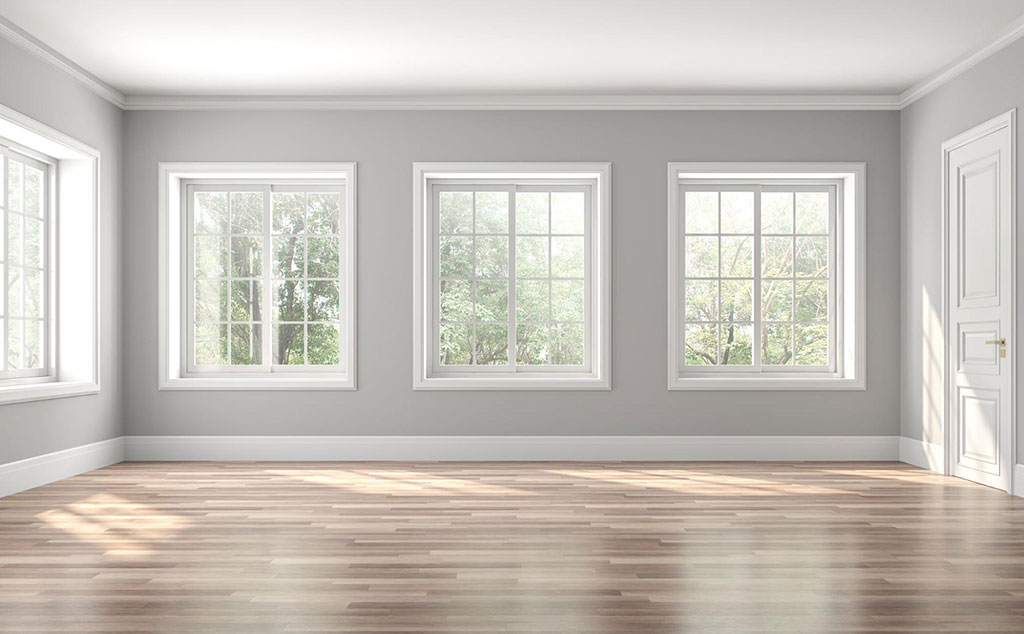How to Choose Energy-Efficient Windows

As a homeowner, you may find yourself literally window shopping when it’s time for new windows for your home. Be sure to learn what’s available before making a selection because investing in quality energy-efficient windows can reduce your energy consumption AND your utility bills! Several factors affect a window’s energy efficiency and overall performance that are worth considering as you shop.
Choosing Energy-Efficient Windows: Frame Materials to Consider
- Vinyl – It’s the most popular window frame material for a reason. Vinyl windows are the least expensive and most low-maintenance choice. However, it’s important to note that they don’t add as much value to a home as the other alternatives.
- Composite/Fiberglass – These materials have a lot to offer. They provide the best energy efficiency of all the window frame options. They are also very durable, weather-resistant, and low-maintenance.
- Aluminum – If budget is a concern, aluminum is an affordable option. Their sleek aesthetic works well with modern exteriors. Because aluminum is a conductor, it is the least favorable choice when considering energy efficiency, but many modern window options feature upgraded insulation options that can help to improve that quality in aluminum windows.
- Wood-clad – If you’re looking for the traditional charm of wood, but want something less demanding in care, wood-clad windows are a happy medium. For energy efficiency, make sure you choose a wood-clad window option with a great R-value.
Choosing Energy Efficient Windows: What to Look For in the Right Glass
Along with the frame, the glass portion of a window also impacts its energy efficiency and quality. The number of panes, as well as the technologies listed below, help block the transfer of heat, keeping heat out when it’s hot, and in when it’s cold. Highly-acclaimed companies like Andersen Windows offer windows with a combination of these features to maximize performance.
- The number of panes – The more panes a window has, the more energy-efficient it is likely to be. For optimal energy efficiency, many experts promote triple-pane windows, but it’s good to know that because they are so expensive, the benefits they provide aren’t always worth the cost. In most residential homes, a double paned window with an energy-efficient gas like Krypton or Argon (we talk about these below) is more than sufficient.
- Spacers – These are designed to allow for differences in pressure and expansion and prevent condensation.
- Coatings – Low-emissivity (Low-E) coating is a thin, reflective, metallic layer applied to a pane of glass to reduce light transmittance and maximize energy efficiency.
- Gas injections – Either Krypton or Argon, both non-toxic and clear gases, can be inserted into the gaps in between the panes, providing additional insulation.
Where Should You Place Your Windows for Ultimate Energy Efficiency?
The amount of heat that is transferred in or out of your windows depends on two external factors: your local climate and the location of your windows (which direction they face).
For instance, if you live in a warmer climate in which you want to keep the air cooler inside, look for windows that keep heat out, which is indicated by a low SHGC value.
For cooler locations, focus on the U-Factor, a measurement of a window’s ability to keep heat inside.
As for orientation, take into account that southern facing windows receive more heat.
How Should Energy-Efficient Windows Be Installed?
Simply put, it doesn’t matter how energy-efficient a window is if it isn’t installed properly. It’s important to ensure you hire a reliable professional who is trained to correctly align and seal windows to prevent leakage. Energy-efficient windows rely heavily on the gasses injected between panels to maintain insulation. If installed improperly, this gas can leak out, which defeats the purpose of your new window. That’s why professional installation is always recommended.
What Does a Window’s Energy-Efficiency Label Mean?
With so many variables in design and materials, shopping may seem challenging, but there are two labels to help you identify the best energy-efficient windows.
- First, look for the ENERGY STAR® logo which designates windows that are certified by the U.S. Environmental Protection Agency (EPA) to meet high-performance standards in regards to energy usage.
- Next, find the certification label. The National Fenestration Ratings Council (NFRC) tests windows and provides the performance data on a label. There are two metrics on the NRFC label, mentioned above, to which you want to pay attention: the U-Factor and SHGC.
- The U-Factor, using a scale of 0.20 to 1.20, determines how well the window prevents heat from escaping.
- The Solar Heat Gain Coefficient (SHGC), ranging from 0 to 1, indicates how well the window blocks the sun’s heat from entering a home.
While the science behind these numbers may be complex, just know that the lower the number, the more efficient the window. These figures will help you compare products and make an informed decision.
If you’re on the hunt for energy-efficient windows, we can help! At Standard Supply & Lumber, we carry quality window products from top name brands — and we’re happy to guide you through which choice may be best for your application. Stop into one of our showrooms or contact our team online to learn more.
